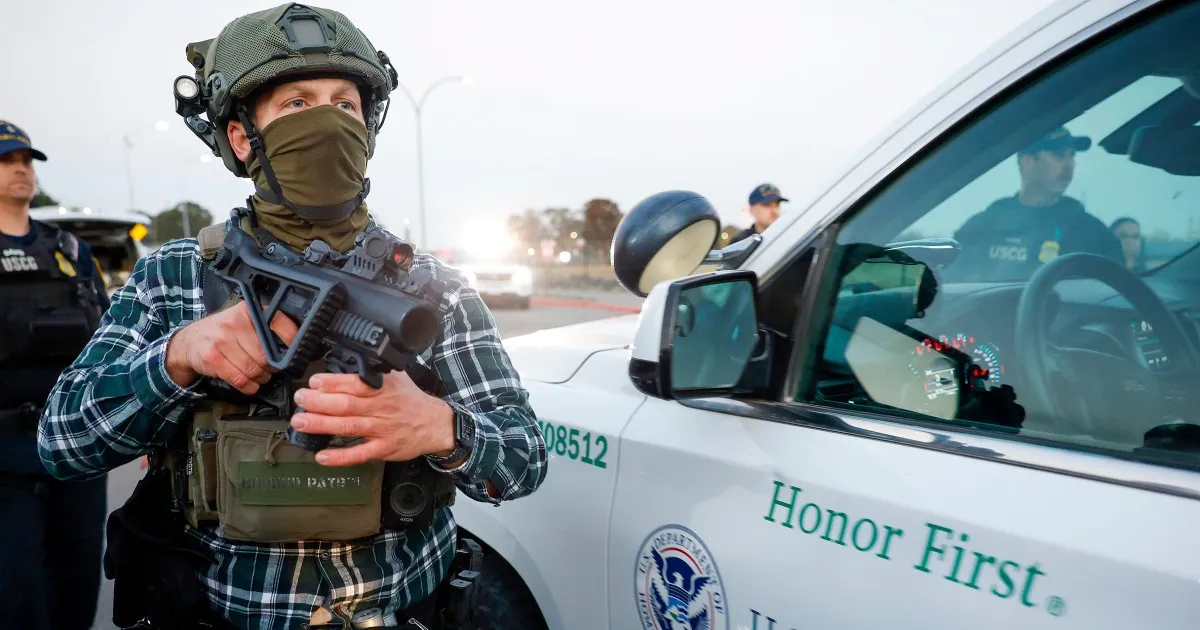
In a significant shift in immigration enforcement strategy, the Trump administration is set to replace several regional leaders at Immigration and Customs Enforcement (ICE) with officials from the Border Patrol. This move aims to intensify the administration's mass deportation efforts amid rising frustration over the current pace of daily arrests, according to multiple sources within the Department of Homeland Security (DHS).
Officials from the DHS have expressed disappointment with ICE's effectiveness in executing immigration raids. President Donald Trump's aides have reportedly endorsed the more aggressive tactics employed by the Border Patrol, which include dramatic operations such as rappelling into apartment buildings from Black Hawk helicopters and conducting arrests in public spaces like Home Depot parking lots. One DHS official noted, “The mentality is CBP does what they’re told, and the administration thinks ICE isn’t getting the job done. So CBP will do it.”
The White House has approved a list that includes at least a dozen directors of ICE field offices who are slated for reassignment in the coming days. According to sources, at least half of these directors will be replaced by Border Patrol officials, potentially affecting nearly half of ICE's leadership. This shake-up is being orchestrated by Corey Lewandowski, a special government employee at DHS, alongside Greg Bovino, the Border Patrol sector chief managing operations in Chicago and previously in Los Angeles.
The administration's increased reliance on Border Patrol signifies a new phase in Trump’s deportation strategy. While ICE has generally focused on making targeted arrests of undocumented immigrants, the Border Patrol's approach has been much more aggressive, often resulting in large-scale sweeps that have drawn significant public backlash and even lawsuits.
Recent data highlights the urgency of this leadership change. As of late September, ICE was averaging just 1,178 arrests per day, falling far short of the 3,000 daily arrests demanded by Stephen Miller, the White House deputy chief of staff and architect of Trump’s immigration policy. The DHS has yet to comment on these leadership changes, but White House spokesperson Abigail Jackson emphasized that the president’s team is committed to his policy agenda, citing the success of their border security and deportation initiatives.
To bolster deportation efforts, Border Patrol has deployed over 1,500 agents in cities nationwide. In comparison, ICE has 8,500 officers dedicated to enforcement and removal operations. The aggressive tactics of the Border Patrol have led to some of the most controversial immigration arrest images since Trump took office, including a recent incident in Chicago where agents rappelled into residential buildings.
As the controversy surrounding these tactics grows, legal challenges are emerging. Videos from Chicago showed incidents of excessive force, such as the use of tear gas by agents, which have led to lawsuits against the administration. Border Patrol Chief Mike Banks has been in the spotlight for these actions, and upcoming court appearances will scrutinize the legality of their tactics.
Some leaders within ICE have voiced concerns over the aggressive tactics employed by Border Patrol in metropolitan areas. Former ICE officials have pointed out that ICE lacks access to certain resources that Border Patrol utilizes, such as Black Hawk helicopters. The growing frustration with ICE from the White House has been evident for months, with Miller previously warning ICE leaders of potential consequences if arrest numbers did not improve.
The Trump administration's decision to lean more heavily on Border Patrol for immigration enforcement marks a pivotal moment in the ongoing debate over immigration policy in the United States. As this strategy unfolds, the implications for both immigrants and law enforcement practices will be closely monitored by advocacy groups and the public alike.